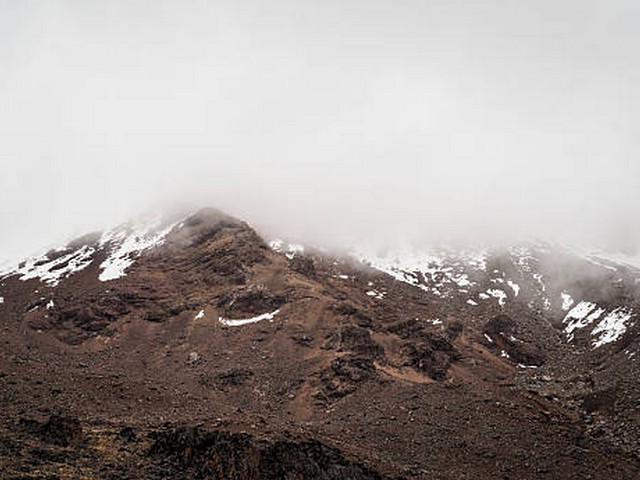What To Wear When Trekking Kilimanjaro: Your Ultimate Guide to Conquering Africa’s Highest Peak
Introduction: Dressing for Success on Mount Kilimanjaro
Trekking up Mount Kilimanjaro, the roof of Africa, is more than a journey—it’s a monumental quest that demands endurance, spirit, and the right attire. Whether you’re a seasoned hiker or a first-time adventurer, what you wear can significantly influence your climbing experience. At Kilimanjaro Centre for Trekking and Ecotourism (KCTE), we understand the importance of proper gear and we’re here to guide you through packing the perfect wardrobe for your Kilimanjaro adventure.
The Layering System: Your Best Friend on the Mountain
Base Layers: Your Second Skin
On the slopes of Kilimanjaro, temperatures can vary dramatically. Your base layer acts as your second skin, keeping you dry and comfortable. Opt for moisture-wicking materials like merino wool or synthetic fibers that draw sweat away from the body. Avoid cotton, as it retains moisture and can leave you feeling cold and damp.
Insulating Layers: The Warmth Within
As you ascend, the air gets thinner and colder. An insulating layer is crucial to retain body heat. Fleece jackets or down vests are perfect for this; they’re lightweight yet incredibly warm and can be easily added or removed as conditions change.
Outer Layers: Your Armor Against the Elements
The summit night on Kilimanjaro is notoriously cold and windy. A good quality, waterproof, and windproof jacket is essential. Look for jackets with ventilation zips and adjustable hoods to protect against the mountain’s unpredictable weather.
Choosing the Right Trekking Pants and Footwear
Trekking Pants: Comfort Meets Functionality
Convertible trekking pants are ideal for Kilimanjaro. They offer flexibility to change from pants to shorts if you overheat during the day. Ensure they are water-resistant and quick-drying to face the mountain’s varied conditions.
Footwear: Foundations of a Successful Climb
Good quality, waterproof, and broken-in hiking boots are non-negotiable for Kilimanjaro. They should provide ankle support and have a sturdy grip to handle rocky and slippery paths. Pair these with moisture-wicking socks and consider bringing thermal socks for the freezing summit night.
Accessorizing for Function and Comfort
Headwear: Protecting the Crown
A thermal beanie is essential for warmth during cold nights, while a wide-brimmed hat will shield you from the equatorial sun during daytime ascents. Don’t forget a headlamp for those pre-dawn summit hours.
Gloves: Essential for Extremity Protection
Invest in a pair of waterproof, insulated gloves to protect your hands from frostbite on summit night. Consider bringing a lighter pair for lower altitudes.
Eyewear: Shielding Your Eyes
UV-protective sunglasses are crucial on Kilimanjaro. The sun’s rays are stronger at high altitudes and can cause severe eye damage.
The Importance of Testing Your Gear Before the Climb
It’s essential to test your gear on multiple hikes before your Kilimanjaro trek. This not only ensures comfort and functionality but also allows you to adjust to the feel and weight of your trekking attire. Remember, on the mountain, familiarity breeds comfort.
Why Choose Kilimanjaro Centre for Trekking and Ecotourism (KCTE)?
At KCTE, we pride ourselves on providing expert guidance and top-tier services for trekkers aiming to conquer Kilimanjaro. Our experienced guides are equipped with the knowledge to ensure you not only choose the right gear but also understand the dynamics of mountain weather. By booking with us, you ensure a seamless, safe, and memorable climbing experience.
FAQs: What To Wear When Trekking Kilimanjaro
What is the best material for base layers while climbing Kilimanjaro?
Opt for merino wool or synthetic materials as they provide excellent moisture-wicking properties and keep you dry.
How many layers should I wear while trekking Kilimanjaro?
It’s advisable to follow the three-layer principle: a base layer for moisture management, an insulating layer for warmth, and an outer layer for protection against wind and rain.
Are jeans suitable for climbing Kilimanjaro?
Jeans are not suitable for climbing Kilimanjaro as they don’t offer the flexibility, moisture control, or insulation needed for high-altitude trekking.
Can I rent trekking gear in Tanzania?
Yes, it’s possible to rent trekking gear in Tanzania, but for the best fit and comfort, we recommend bringing personally tested gear from home.
In Conclusion: Ready to Embark on Your Kilimanjaro Adventure?
Packing the right clothing for your Kilimanjaro trek is crucial to your success and enjoyment on the mountain. By carefully selecting appropriate layers, testing your gear, and preparing for every weather scenario, you set the stage for an extraordinary expedition. Ready to start your journey to the peak with the best possible preparation? Book your climb with Kilimanjaro Centre for Trekking and Ecotourism (KCTE) today, and let us guide you to the summit of Africa.
Embrace the challenge, dress for success, and let us help you achieve your dreams on the mighty Kilimanjaro.




